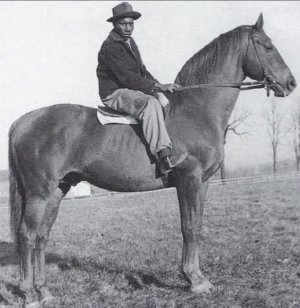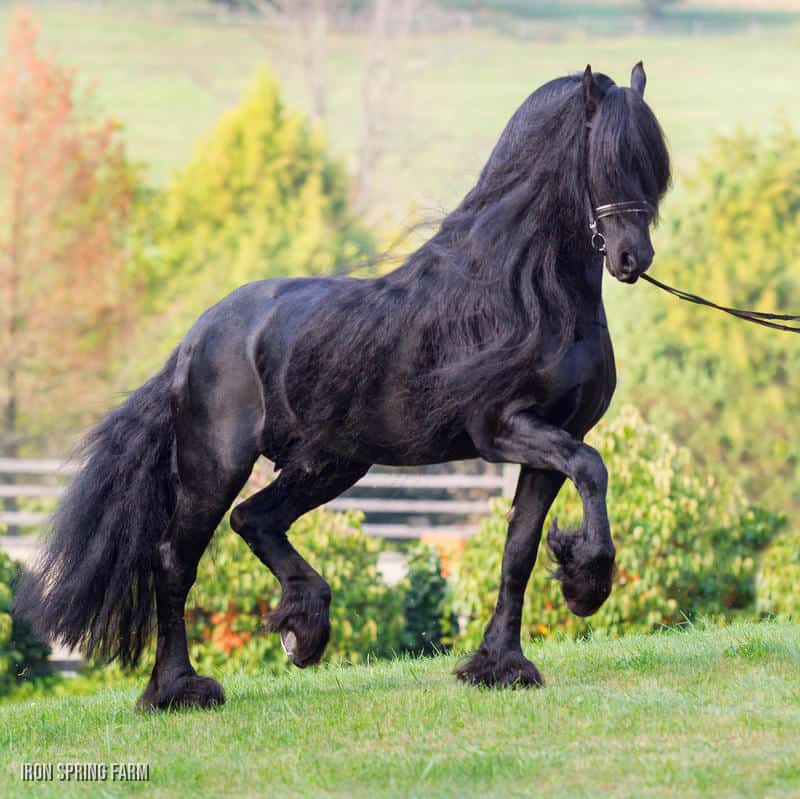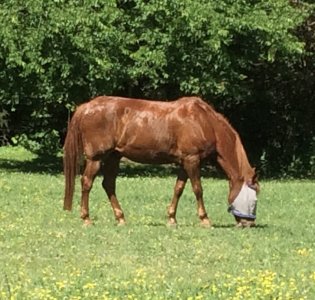katlupe
SF VIP
- Location
- Norwich, NY

Thank you for this article@ I've heard of Man 'O war but I didn't know all these details What a tremendous horseMan o' War
View attachment 438674
They didn’t race him.
They unleashed him.
Man o’ War didn’t just run — he scorched the Earth beneath his hooves. A fire-blooded titan born in 1917, in the shadow of World War I, his name was no accident. He galloped like war itself — powerful, relentless, and unforgettable.
From his debut, he was a phenomenon. He won 20 of 21 starts, and in the one race he lost? He gave the field a 100-yard head start — and still nearly caught the winner.
They tried to contain him with heavy weights, with poor starts, with challengers thrown at him from every corner of the country. Nothing worked. He demolished records, stretched margins, and turned tracks into stages for his fury.
His most iconic moment?
The 1920 match race at Kenilworth Park against Triple Crown winner Sir Barton — the best of the best. But it wasn’t a duel. It was a coronation. Man o’ War galloped away like a crimson tempest, leaving Sir Barton trailing in awe.
And yet… they retired him early. Why?
Because there was no one left to beat.
In the decades that followed, he became a legend at Faraway Farm, greeting thousands of visitors. Veterans bowed to him. Children gasped at him. Even those who never saw him remembered the name like scripture.
He didn’t need the Triple Crown.
He didn’t need approval.
He was the standard.
To this day, Man o’ War remains the flame that lit American racing’s soul — and every time a great horse hits the track, his shadow gallops beside them.

Even though I no longer ride due to vertigo, if I saw this boy I'd be wanting him! Look at that chest, wonder if he has Quarter Horse breeding.
Looks like you did good with it! Good shots!A day at the races trying out my long range lens for the 1st time to get those action shots clear.
View attachment 438690 View attachment 438691 View attachment 438692
I wanted to practice so I could get some shots of Eagles flying at the lake we used to go fishing at in Wisconsin...that didn't work out so well, they fly too fastLooks like you did good with it! Good shots!
Man o' War
View attachment 438674
They didn’t race him.
They unleashed him.
Man o’ War didn’t just run — he scorched the Earth beneath his hooves. A fire-blooded titan born in 1917, in the shadow of World War I, his name was no accident. He galloped like war itself — powerful, relentless, and unforgettable.
From his debut, he was a phenomenon. He won 20 of 21 starts, and in the one race he lost? He gave the field a 100-yard head start — and still nearly caught the winner.
They tried to contain him with heavy weights, with poor starts, with challengers thrown at him from every corner of the country. Nothing worked. He demolished records, stretched margins, and turned tracks into stages for his fury.
His most iconic moment?
The 1920 match race at Kenilworth Park against Triple Crown winner Sir Barton — the best of the best. But it wasn’t a duel. It was a coronation. Man o’ War galloped away like a crimson tempest, leaving Sir Barton trailing in awe.
And yet… they retired him early. Why?
Because there was no one left to beat.
In the decades that followed, he became a legend at Faraway Farm, greeting thousands of visitors. Veterans bowed to him. Children gasped at him. Even those who never saw him remembered the name like scripture.
He didn’t need the Triple Crown.
He didn’t need approval.
He was the standard.
To this day, Man o’ War remains the flame that lit American racing’s soul — and every time a great horse hits the track, his shadow gallops beside them.
Even though I no longer ride due to vertigo, if I saw this boy I'd be wanting him! Look at that chest, wonder if he has Quarter Horse breeding.

Yes, that is how my horse saw herself too!
